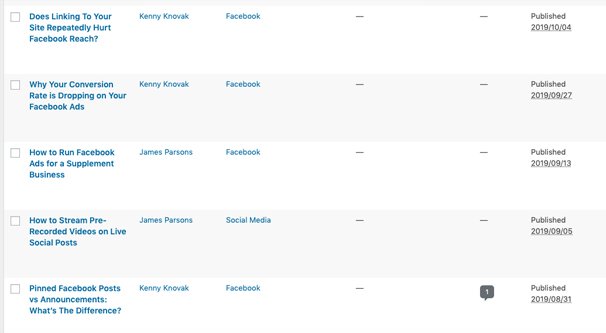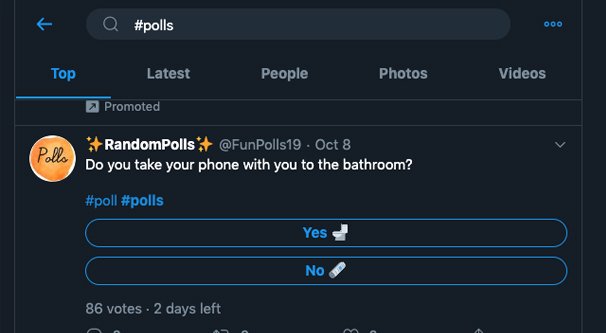15 Ways to Break Out of Your Social Media Slump

Sooner or later it happens to everyone.
You’re sitting at your computer, ready to get to work. You’ve opened up your program of choice, be it Photoshop, Canva, an Excel spreadsheet for ideas, or even just a notepad .txt file.
You’re ready to get those creative juices flowing. You want to write that killer copy for your Facebook page, that one Tweet that will finally hit the big time and let you pitch your Soundcloud. Any second now. Any time. Just… let the ideas come. They’ll be here, right? They’re not ghosting you?
Three hours later, you’re frustrated and angry. You’ve written two words and deleted them both. Your image file has a little sketching in it, a doodle that has nothing to do with anything, and you can’t bring yourself to do anything more than delete it.
You’re in a slump. You have writer’s block, artist’s block, creative block. Whatever you want to call it, you’re staring at a blank document, and nothing gets done.
Or maybe that’s not quite accurate. Maybe you’re readily able to come up with ideas, it’s just that every time you write one down, you realize it’s very similar to something else you’ve written or designed. You keep trying, but all your ideas are just derivatives of posts you’ve already made. You want something new, something awesome, something that will wow your audience and get them to pay attention to your business.
Everyone experiences the creative slump if they’re working in a creative field for any length of time. What separates the novices from the pros is how you handle it. If you sit and stare at the page for hours and get nothing done, well, I’m sorry to say that you’re missing a certain critical skill: the ability to pull yourself out of that slump.
To a certain extent, this ability comes from practice. The longer you spend working in this field, the more experience you’ll have with breaking through the block. That said, you can often force yourself to move past it with a few handy little cheats.
That’s right; all you need is a document like this one, with ideas you can use as a basis to grow into your own new ideas. Go ahead, I don’t mind. Take these ideas and run with them, make them your own. That’s what they’re here for.
1. Make Building Blocks
At the core of all communication is the concept of memes. No, not memes as in those image macros and cat photos; I mean memes in the original sense. The word meme came as a sort of cognitive, mental version of gene; a discrete, single element of culture, behavior, or thought that can be used as a building block for larger concepts, or that can be passed from one person to the next.
Build your own memes and play with them. I’ve seen a few different ways to do this. Some people suggest buying a bunch of basic Lego bricks and writing words on them. Some people use a custom version of magnetic poetry sets. Some people build paper cubes and roll them like dice.
Write words on each piece. Words that relate to your brand and your marketing. Keywords, content themes, formats like listicles or how to guides, buyer personas, customer pain points, whatever; as long as it’s relevant to your brand, write it down. Get as many as possible.
Now grab a small handful – or roll the dice – and see what comes up. Take this limited selection of concepts and ideas, these memes, and draw connections between them. With a big enough pool and a little creative thought, you can have thousands of ideas ready to be “randomly” generated.
2. Browse Your History
This one is pretty simple. If you’re looking for something to break yourself out of a slump, look to what has worked best in the past. Most social media platforms have analytics that will tell you what your best performing posts were in the past. Just look at those and see if you can replicate their success.
Of course, sometimes the slump comes because you’ve been trying to replicate past posts so much that you’ve driven them into the ground. If that’s the case, you need to start looking outside the box and this idea won’t work.
3. Check the Competition
Just because you’re in a slump doesn’t mean everyone else is. Competitive research is always a good idea, just to know what your opposition is doing. Check out their posts – and if possible, figure out what their best posts are at the moment – and see if you can do something similar. I typically look for three different angles:
- Can I do something similar to what they’re doing, with my own unique twist?
- Can I directly engage with them and refute or challenge them?
- Can I do something that functions in the exact opposite way as what they did?
Just make sure you’re “stealing” ideas, and not stealing ideas.
4. Ask the Audience
Asking your audience is like easy mode for some highly engaging content on social media. Come up with a question you want to see an answer to and ask them.
It can be anything from “if we were to introduce a new feature, what would you want most?” to something completely unrelated to your brand, like “what’s your favorite local flower?” Just make sure you don’t ask completely unrelated questions too often.
5. Address Industry News
Sure, you might not be a news agency, but you’re part of some industry, and there’s always something going on. Maybe there’s some new regulation coming down the pipeline, or an old regulation looking to be appealed. Maybe there’s a new product or new technology on the horizon. Maybe there’s just interesting financial news. There’s usually something you can talk about. Address the news, explain it, and talk about your perspective on it. As an added bonus, this kind of post tends to be highly quoted by others who are reporting on the same news, meaning you may get all kinds of citations and links.
6. Deliver a Retrospective
Where was your company six months ago? How were you doing one year ago? What was your most recent major milestone, and the one before that? If you were to chart a course based on your past year of performance, where will you be a year from now? It’s always interesting to take a look back into the past and see where you’ve been and how you’ve grown. You can’t use this kind of post too often, but it can be very compelling when you do pull it out.
7. Be Nostradamus
You can look into the past, but what about the future? Where do you expect your business or your industry to go in the next 365 days?
One of my favorite series of posts in this vein is Rank Fishkin’s SEO predictions. Every year until recently, Rand has made predictions for his industry for the coming year, and also looks back and grades his predictions from the year before. It’s very compelling and, when he’s accurate, does a lot of work to position him as a thought leader.
8. Go On a Field Trip
Sometimes a change of scenery can do you a lot of good. You might not even need to go far; even something like a local museum you’ve never visited can be a good source of inspiration. You might not be able to do this during business hours, though maybe a quick trip during your lunch break will work, but hey; it’s a fun way to get out either way.
A walk in the park, a trip to a museum, seeing a movie you might not otherwise go to see; get outside of your usual routine. Even just walking through a neighborhood you’ve never visited can give you inspiration from all the little things, from the architecture to the local graffiti.
9. Take Others on a Field Trip
Flip the idea of a field trip around; what if a bunch of, say, grade school students were to come visit your business on a school trip? What kind of tour would you give them? What kind of a look behind the scenes would you present to them, and how would you make it interesting?
Sometimes your social media audience can feel like a bunch of children, so why not give them something easy to focus on, like a trip behind the scenes? Give them a look at how you do things internally. Point out interesting elements of your business, interview specific employees who volunteer or consent to it, or even just do a photo tour of your offices. As long as it’s interesting, it can get some good engagement – and maybe a few job applications.
10. Do Something Meditative
One of the more recent trends for spurring a little creative juices while letting your mind wander is the adult coloring book. No, not “adult” in that sense, I just mean a complex design, like one of these. Buy a pack of colored pencils or markets and a coloring book in this style, and just budget yourself half an hour or so to color. You’re doing something creative, something that requires focus and minor decision-making, but that doesn’t require a ton of cognitive ability. This lets your mind wander and can spur on ideas.
Just make sure you’re not going to get in trouble with your boss for coloring instead of working. It does you no good if you’re just stressed and trying to hide it.
11. Study a Historical Figure
Anyone from Abraham Lincoln to Elon Musk can give you some inspiration, through their successes or their failures. Look to any public figure, past or present, and dig into their biography, their history, their wins and losses. Draw connections between what they’ve done and are doing, and what you’re doing. Then see if you can leverage those connections into some kind of post concept that will draw engagement.
There’s a fine line here, though. It gets pretty awkward if, for example, your company that sells marketing software is trying to compare itself to a civil rights leader. Don’t draw a comparison you can’t live up to, or that the public figure in question would have denounced.
12. Ask the Office
Crowdsourcing ideas from your audience is one thing, but remember you also have coworkers, and your coworkers have ideas of their own. It’s probably not their job to come up with social media campaigns for you, but you can still ask if they’ve ever had any inspiration. Try to avoid shutting them down or calling their ideas bad; take what they say and run with it. Get excited and let their excitement and inspiration lead you.
13. Pump Up the Jams
Music inspires us. I, personally, am listening to something via Pandora or Spotify pretty much the entire time I’m awake. It blows my mind when I hear other people talk about never listening to music.
Any system where you can flow from one song to the next without needing to interact or choose the songs is great for creativity. Discover new music and new themes, and let interesting new lyrics inspire ideas in your mind. You might be surprised at just how much you can get out of a new song or new genre.
14. Browse a Social Network
Browsing Facebook, Twitter, Imgur, Reddit, or another network while at work often seems like slacking, and it is, if you’re not putting the right mindset into it. Browse these networks, but keep your business in mind. Look at the ads, look at the popular posts, look at the trends. What is popular, and why is it popular? Can you piggyback on something that’s trending? Can you do something similar and call it your own?
15. Never Discard Ideas
The cardinal sin of brainstorming is discarding ideas. There’s a school of thought where you brainstorm 50 ideas, narrow those 50 down to 10, and narrow those 10 down to 2-3 you can use, and discard the rest. I call that a huge waste of resources.
Any time you have an idea, write it down. Put it on a napkin, write it in an Evernote doc on your phone, keep a big dumb txt file of quotes and ideas and keywords, I don’t care. Just keep a huge ideas file and periodically browse it. An idea you thought was bad before might be better now. An idea that didn’t spur your creativity before might give you a new idea now. If you keep those pieces around, they can be an important part of the puzzle later.








